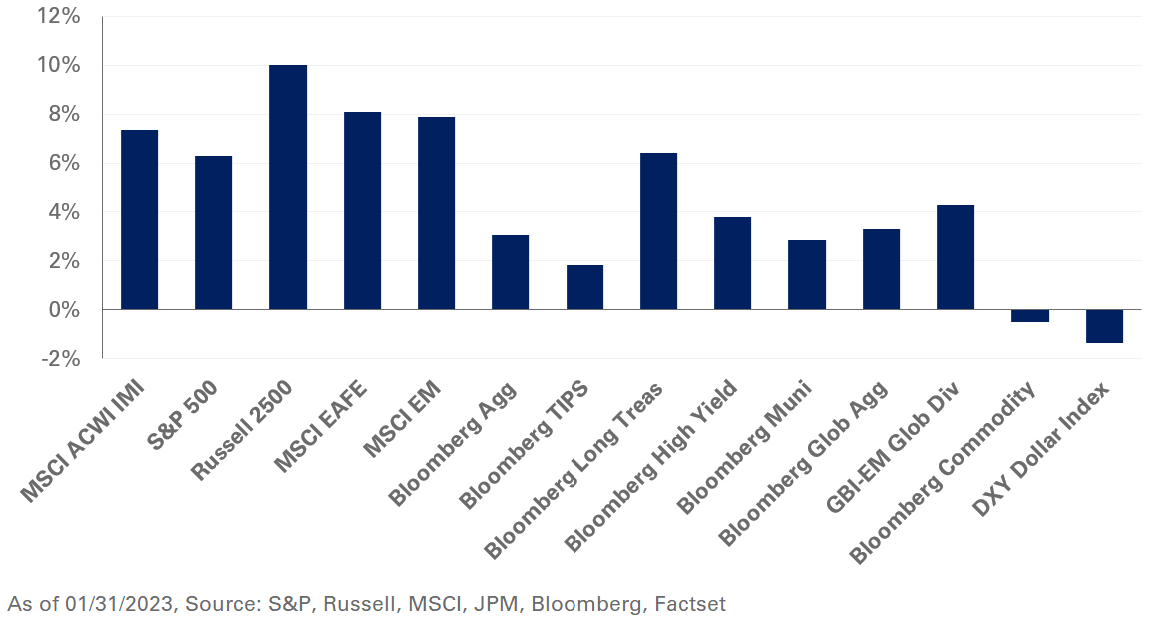Global assets started 2023 on solid footing amid signs of waning inflation and robust growth. In the U.S., headline CPI marked its first monthly decline since May 2020, falling 0.1% in December, after rising 6.5% in 2022.
Labor markets remained resilient with the unemployment rate declining to 3.5% in December, even as labor force participation rates rose to 62.3%. Meanwhile, the U.S. economy expanded at an annualized rate of 2.9% over the fourth quarter as increases in consumption and inventories offset a decline in fixed investments.
Emboldened investors fueled gains of 6.3% in the S&P 500 Index in January. The risk-on sentiment was further bolstered by growth outperforming value stocks for the first time since July 2022, with the Russell 1000 Growth and Value Index up 8.3% and 5.2%, respectively. Notably, the technology-heavy Nasdaq 100 outperformed, returning 10.7%, on the back of a strong showing by mega-cap names. Outside the U.S., weakness in the dollar boosted equities with the MSCI EAFE and MSCI Emerging Market indexes up 8.1% and 7.9%, respectively. Chinese equities outperformed, rising 11.8%, as a combination of better-than-expected GDP data and the reversal of lockdown restrictions continued to improve economic outlook.
In fixed income, the U.S. Treasury yield curve shifted lower as slowing headline inflation numbers fueled optimism. Two- and 10-year Treasury yields declined 21 and 35 basis points, respectively, pushing the spread further into negative territory at 0.7%. As a result, the Bloomberg U.S Long Treasury Index outperformed and rose 6.4% last month.
Elsewhere, in real assets, natural gas spot prices fell 23.8% in January – marking the lowest level since March 2021 as warmer-than-expected winters in Europe alleviated demand. As a result, the Bloomberg Commodity Index ended the month down 0.5%.
At NEPC, our stance towards equity risk remains unfavorable given concerns around the path of corporate earnings and stagflation trends. We recommend building exposure to short-term investment-grade credit as higher yields offer an attractive defensive position. We also suggest adding exposure to value stocks in U.S. large-cap equity to mitigate the portfolio impact of rising interest rates and inflation normalizing above market expectations. In addition, we still suggest maintaining adequate portfolio liquidity with safe-haven exposure and encourage a neutral portfolio-level duration posture relative to policy targets.




